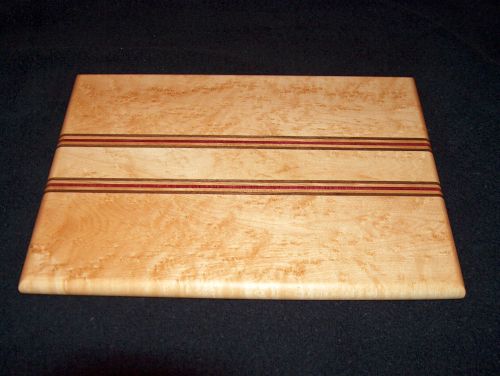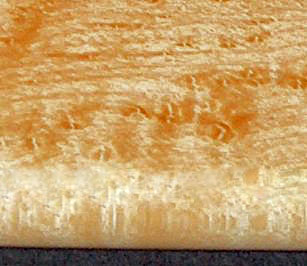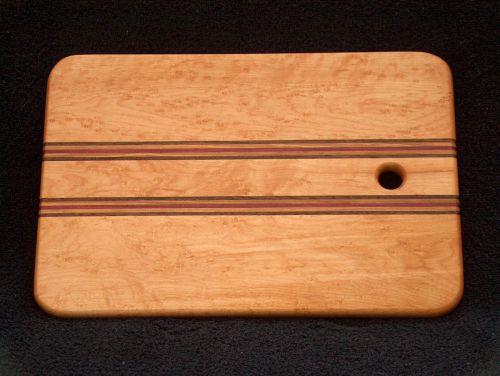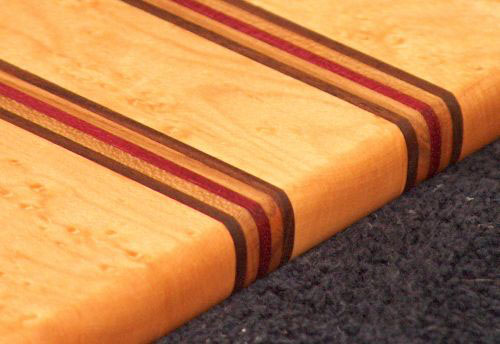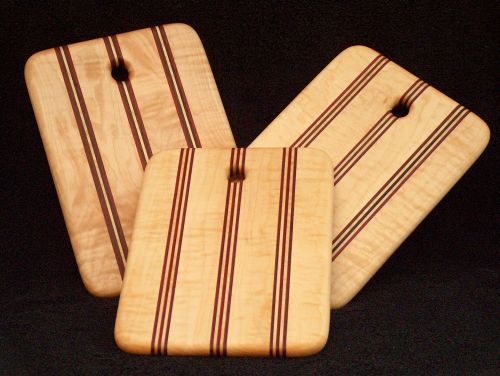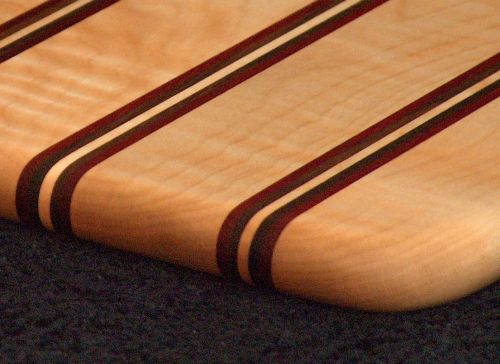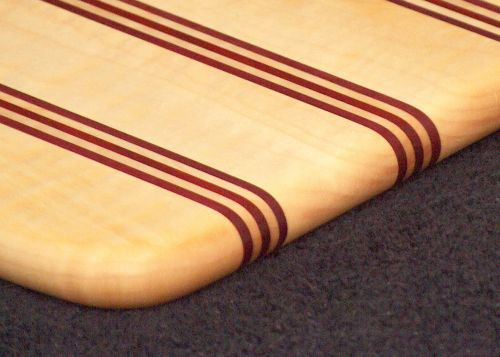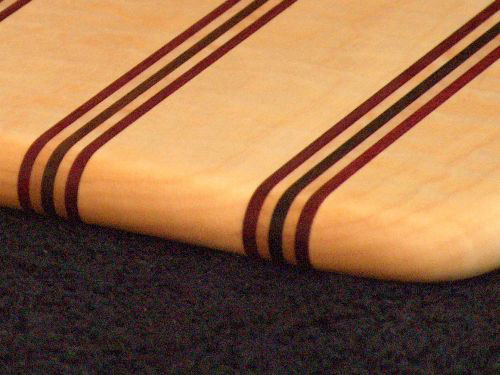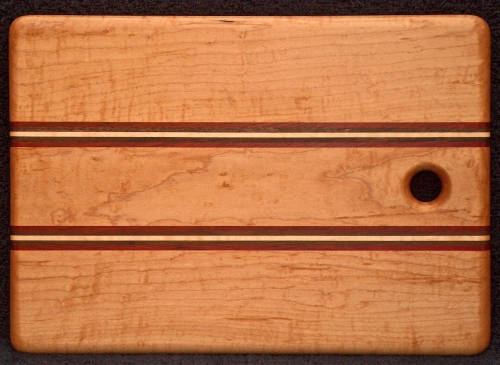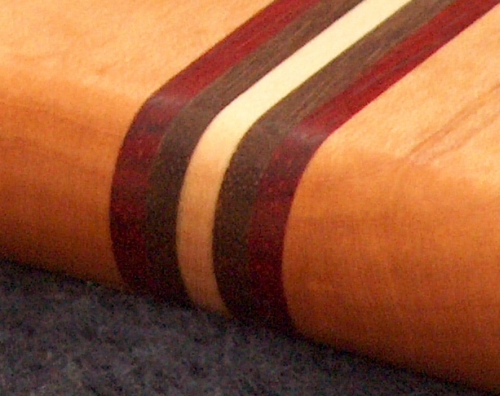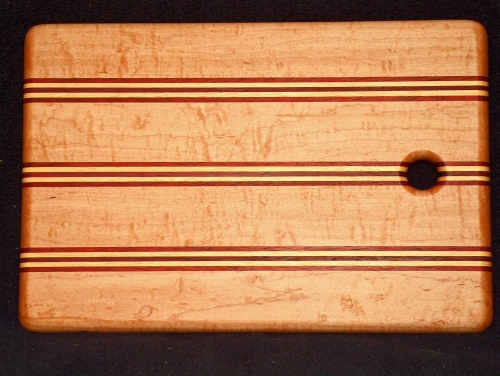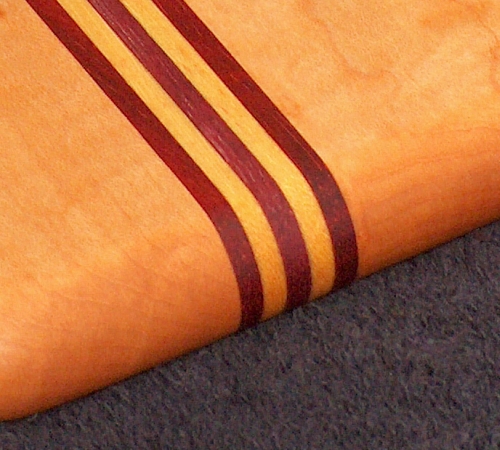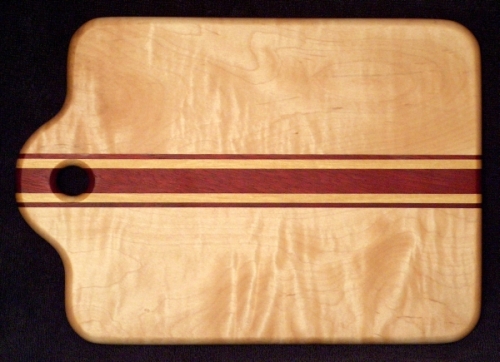small boards
My typical small cutting and serving boards are about 3/4" thick and approximately 11" to 12" long by somewhere around 9" in width. They are perfect as cheese boards or small serving boards. Here are a few recent examples. With one exception (the first board shown here), all of these boards have been given as gifts.
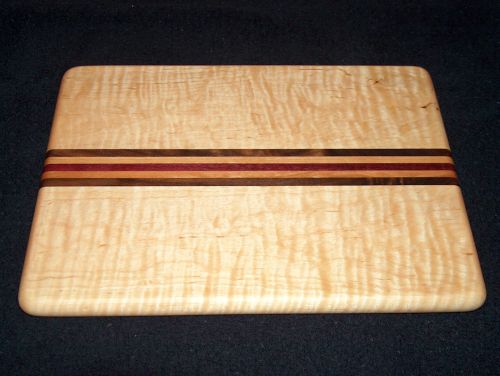
This board is made of curly maple with accent stripes of walnut, cherry and purple heart. Curly maple of this quality is uncommon – it’s a fortunate find.
This picture fails to really show the depth of the grain, and the smooth as glass (400 grit sandpaper) finish.
|
This board is made of nicely-figured birdseye maple with accents of walnut, cherry and purple heart. Birdseye maple this nice is difficult to find, but I saw this wood and thought it would make a nice board. Lots of depth to the figuring on this wood.
This is another variation on the birdseye maple, with a different edge treatment and a hole for hanging and displaying the board.
Here's a detail shot of the walnut, cherry and purple heart accent stripes and the edge treatment on this board. Instead of a fully rounded edge, this one has more of the "softened corners" approach.
This is a series of three small boards I made for some Japanese friends. Although each board has similar dimensions, the differences in the accent stripes (and of course, the differences in each piece of curly maple) make each one unique.
Here are detailed pictures of the accent stripes in the boards above, from left to right...
Each accent stripe is made of five 1/8" wide pieces of satine (red), walnut (brown) and maple (white). This is a good example of a fully rounded edge.
This accent is a combination of purple heart (purple, of course), maple and satine. The red and purple colors are completely natural — no dyes or stains.
And finally, this board is accented with satine, maple and walnut. The red and brown are really set off by the lighter maple wood.
As you can see, even with the same wood species, the different arrangements of the colors can create completely different effects. That's part of the fun I get from making these cutting boards.
This board was commissioned to be given as a gift. Like one of the earlier examples, it also uses satine/walnut/maple for the accent stripes, but with two stripes instead of three.
One of the reasons for using this particular combination for the accent stripes again is simply that it looks nice.
This board is the first I built with African yellow heart as an accent color. Like purple heart, it is a naturally-colored wood that looks unnatural.
These accent stripes are made of satine (the red), yellow heart (guess which color that is) and purple heart. I call this board the "Circus Stripes" board because the colors are so bright. This picture really doesn't accurately show the brightness of the colors, but you probably get the general idea. Not only is the yellow heart wood colorful, it's also quite dense, which lends itself to things like cutting boards.
This little board was made from what amounted to leftover scraps. It's curly maple with satine and yellow heart "racing stripes". This particular board was auctioned off for the Gulf Coast relief efforts, and it raised $61.50 for the American Red Cross. |
